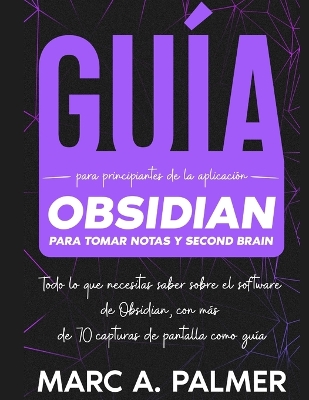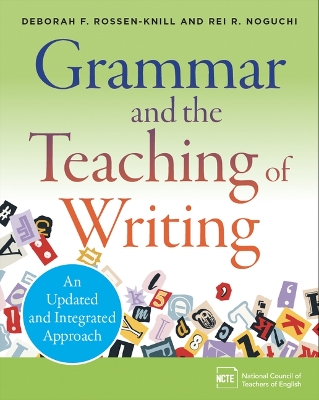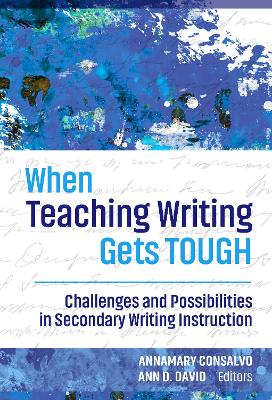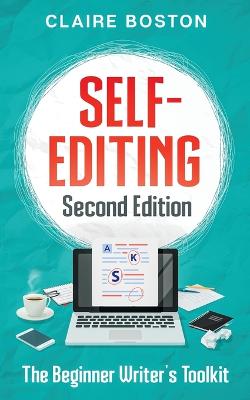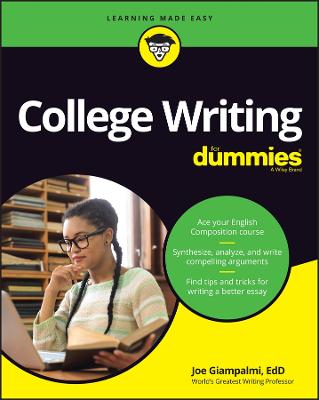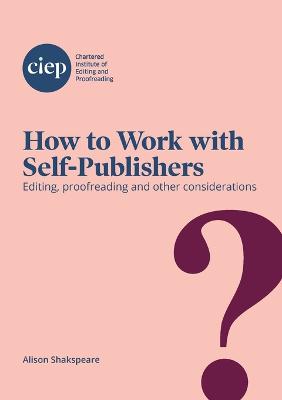Little, Brown Handbook, The, Global Edition
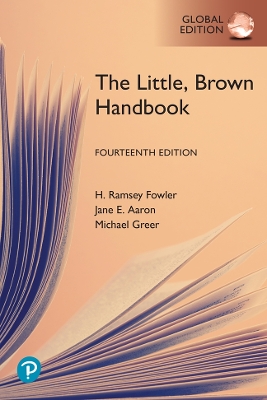 portes grátis
portes grátis
Little, Brown Handbook, The, Global Edition
Fowler, H.; Aaron, Jane
Pearson Education Limited
11/2022
888
Mole
Inglês
9781292441191
15 a 20 dias
1078
Descrição não disponível.
I. The Process of Writing
Assessing the Writing Situation
1.1 How Writing Happens
1.2 The Writing Situation
1.3 Audience
1.4 Purpose
1.5 Subject
1.6 Genre and Medium
Discovering and Shaping Ideas
2.1 Invention
2.2 Thesis
2.3 Organization
Sample Informative Essay
Drafting, Revising, and Editing
3.1 First Draft
Sample First Draft
3.2 Revising
3.3 Peer Review
3.4 Sample Revision
Sample Revised Draft
3.5 Editing
3.6 Final Draft
Sample Final Draft
Writing and Revising Paragraphs
4.1 Flow
4.2 Unity
4.3 Coherence
4.4 Development
4.5 Introductions, Conclusions, and Transitions
Presenting Writing
5.1 Academic Writing
5.2 Visuals and Media
5.3 Writing Online
Sample Literacy Narrative Blog Post
5.4 Oral Presentations
Sample Presentation Slides
5.5 Portfolios
II. Reading and Writing in and out of College
Writing in Academic Situations
6.1 Purpose and Audience
6.2 Genre
6.3 Writing with Sources
6.4 Academic Language
6.5 Communication in Academic Settings
Critical Reading and Writing
7.1 Critical Thinking
7.2 Techniques of Critical Reading
7.3 Summarizing
7.4 Critical Response
7.5 Visual Analysis
7.6 Writing a Critical Analysis
7.7 Sample Critical Responses
Sample Critical Analysis of a Text
Sample Critical Analysis of a Visual
Reading Arguments Critically
8.1 The Elements of Argument
8.2 Claims
8.3 Evidence
8.4 Reliability
8.5 Assumptions
8.6 Language and Tone
8.7 Fallacies
8.8 Visual Arguments
Writing an Argument
9.1 Subject
9.2 Thesis, Purpose, and Audience
9.3 Reasoning
9.4 Evidence
9.5 Engaging Readers
9.6 Organizing and Revising
9.7 Sample Argument
Sample Proposal Argument
Taking Essay Exams
10.1 Preparing
10.2 Planning
10.3 Writing
Sample Essay Exam Answer
Public Writing
11.1 Social Media
11.2 Letters and Memos
Sample Business Letter
Sample Memo
11.3 Job Applications
Sample Job Application Letter
Sample Resumes
11.4 Reports and Proposals
Sample Report and Proposal
11.5 Community Service
Sample Social-Media Post
III. Grammatical Sentences
Understanding Sentence Grammar
12.1 Sentence Basics
12.2 Sentence Patterns
12.3 Single-Word Modifiers
12.4 Word Groups
12.5 Compound Constructions
12.6 Inverted Order
12.7 Sentence Types
Case of Nouns and Pronouns
13.1 Subjective, Objective, and Possessive Cases
13.2 Compound Subjects and Objects
13.3 Common Questions about Case
Verbs
14.1 Verb Forms
14.2 Easily Confused Verb Forms
14.3 Verb Endings
14.4 Helping Verbs
14.5 Verbs with Gerunds and Infinitives
14.6 Verbs with Particles
14.7 Verb Tenses
14.8 Sequence of Tenses
14.9 Subjunctive Mood
14.10 Active and Passive Voice
Agreement
15.1 Subject-Verb Agreement
15.2 Unusual Word Order
15.3 Subjects Joined by Conjunctions
15.4 Indefinite and Relative Pronouns
15.5 Collective and Plural Nouns
15.6 Pronoun-Antecedent Agreement
Adjectives and Adverbs
16.1 Functions of Adjectives and Adverbs
16.2 Comparative and Superlative Forms
16.3 Double Negatives
16.4 Nouns as Modifiers
16.5 Determiners
IV. Clear Sentences
Sentence Fragments
17.1 Identifying Fragments
17.2 Correcting Fragments
17.3 Common Types of Fragments
17.4 Acceptable Fragments
Comma Splices and Fused Sentences
18.1 Identifying Comma Splices and Fused Sentences
18.2 Correcting Comma Splices and Fused Sentences
Pronoun Reference
19.1 Clear Reference
19.2 Close Reference
19.3 Specific Reference
19.4 Appropriate You, Who, Which, and That
Shifts
20.1 Types of Shifts
20.2 Person and Number
20.3 Tense and Mood
20.4 Subject and Voice
20.5 Direct and Indirect Quotations and Questions
Misplaced and Dangling Modifiers
21.1 Clear Placement
21.2 Limiting Modifiers
21.3 Squinting Modifiers
21.4 Separated Subjects, Verbs, and Objects
21.5 Separated Infinitives and Verb Phrases
21.6 Position of Adverbs
21.7 Order of Adjectives
21.8 Dangling Modifiers
Mixed and Incomplete Sentences
22.1 Mixed Grammar
22.2 Mixed Meaning
22.3 Incomplete Compounds
22.4 Incomplete Comparisons
22.5 Careless Omissions
V. Effective Sentences
Emphasizing Ideas
23.1 Subjects and Verbs
23.2 Subject Beginnings and Endings
23.3 Parallel Elements
23.4 Repetition and Separation
23.5 Conciseness
Using Coordination and Subordination
24.1 Coordination
24.2 Subordination
24.3 Connecting Words
Using Parallelism
25.1 Understanding Parallelism
25.2 Equal Elements
25.3 Coherence
Achieving Variety
26.1 Sentence Length and Structure
26.2 Sentence Beginnings
26.3 Word Order
VI. Punctuation
Chart: Commas, Semicolons, Colons, Dashes, and Parentheses
End Punctuation
27.1 Period
27.2 Question Mark
27.3 Exclamation Point
The Comma
28.1 Uses of the Comma
28.2 Main Clauses Linked by Conjunctions
28.3 Introductory Elements
28.4 Nonessential Elements
28.5 Series and Coordinate Adjectives
28.6 Quotations and Other Conventional Uses
28.7 Unnecessary Commas
The Semicolon
29.1 Main Clauses without Coordinating Conjunctions
29.2 Main Clauses with Transitional Words
29.3 Main Clauses That Are Long or Contain Commas
29.4 Items in a Series
29.5 Unnecessary Semicolons
The Apostrophe
30.1 Possession
30.2 Contractions and Abbreviations
Quotation Marks
31.1 Direct Quotations
31.2 Titles of Works
31.3 Words Used in a Special Sense
31.4 With Other Punctuation
Other Punctuation Marks
32.1 Colon
32.2 Dash
32.3 Parentheses
32.4 Brackets
32.5 Ellipsis Mark
32.6 Slash
VII. Mechanics
Capitals
33.1 Conventions
33.2 First Word of Sentence
33.3 Titles and Subtitles
33.4 Proper Nouns and Proper Adjectives
Italics or Underlining
34.1 Titles of Works
34.2 Foreign Words and for Emphasis
Abbreviations
35.1 Abbreviations in Nontechnical Writing
35.2 Misuses of Abbreviations
Numbers
36.1 Numerals and Words
36.2 Dates and Addresses
VIII. Effective Words
Using Appropriate Language
37.1 Standard English
37.2 Texting and Electronic Shortcuts
37.3 Slang, Colloquialisms, Regionalisms, and Jargon
37.4 Indirect or Pretentious Writing
37.5 Sexist and Biased Language
Using Exact Language
38.1 Dictionary, Thesaurus, and Spelling Checker
38.2 Denotation and Connotation
38.3 Abstract and Concrete Words
38.4 Idioms
38.5 Figurative Language
38.6 Trite Expressions
Writing Concisely
39.1 Achieving Conciseness
39.2 Subjects and Verbs
39.3 Empty Words and Phrases
39.4 Unnecessary Repetition
39.5 Other Strategies
Spelling and the Hyphen
40.1 Common Spelling Problems
40.2 Spelling Rules
40.3 Spelling Skills
40.4 Hyphenating Words
IX. Research Writing
Planning a Research Project
41.1 The Process of Research Writing
41.2 Research Questions
41.3 Research Strategies
41.4 Working Bibliographies
Sample Annotated Bibliography Entry
Finding Sources
42.1 Search Strategies
42.2 Reference Works
42.3 Books and Periodicals
42.4 Web Search Strategies
42.5 Social Media
42.6 Government Publications
42.7 Visuals and Media
42.8 Primary Research
Working with Sources
43.1 Interacting with Sources
Sample Annotated Source
43.2 Evaluating Sources
43.3 Synthesizing Sources
43.4 Summary, Paraphrase, and Quotation
43.5 Integrating Sources
Avoiding Plagiarism
44.1 Defining Plagiarism
44.2 Information You Do Not Need to Cite
44.3 Information You Must Cite
44.4 Documenting Sources
44.5 Copyright and Permissions
Writing the Paper
45.1 Developing a Thesis
45.2 Organizing Your Ideas
45.3 Drafting a Research Paper
45.4 Revising and Editing
45.5 Preparing a Final Draft
Using MLA Documentation and Format
46.1 In-text Citations
46.2 List of Works Cited
46.3 MLA Paper Format
Two Research Papers in MLA Style
47.1 Sample Research Paper in MLA Style
"The Dream of Sustainable Agriculture"
47.2 Sample Literary Research Paper in MLA Style
"Intersecting Race and Gender in Angelia Weld Grimke's Rachel"
X. Writing in the Academic Disciplines
Reading and Writing about Literature
48.1 The Methods of Literary Analysis
48.2 Writing Assignments in Literature
48.3 The Tools and Language of Literary Analysis
48.4 Citing Sources When Writing about Literature
48.5 Writing a Literary Analysis
Sample Literary Analysis
Writing in Other Humanities
49.1 Methods and Evidence
49.2 Common Writing Assignments
49.3 Tools and Language
49.4 Documenting Sources
49.5 Paper Format
Writing in the Social Sciences
50.1 Common Genres in the Social Sciences
50.2 Research Conventions in the Social Sciences
50.3 In-text Citations in APA Style
50.4 References in APA Style
50.5 Research Paper Format in APA Style
50.6 Sample Research Paper in APA Style
"Perceptions of Mental Illness on College Campuses"
Writing in the Natural and Applied Sciences
51.1 Methods and Evidence
51.2 Common Writing Assignments
51.3 Tools and Language
51.4 CSE Style
51.5 Paper Format
51.6 Sample Paper
"Caterpillar Defense Mechanisms"
Assessing the Writing Situation
1.1 How Writing Happens
1.2 The Writing Situation
1.3 Audience
1.4 Purpose
1.5 Subject
1.6 Genre and Medium
Discovering and Shaping Ideas
2.1 Invention
2.2 Thesis
2.3 Organization
Sample Informative Essay
Drafting, Revising, and Editing
3.1 First Draft
Sample First Draft
3.2 Revising
3.3 Peer Review
3.4 Sample Revision
Sample Revised Draft
3.5 Editing
3.6 Final Draft
Sample Final Draft
Writing and Revising Paragraphs
4.1 Flow
4.2 Unity
4.3 Coherence
4.4 Development
4.5 Introductions, Conclusions, and Transitions
Presenting Writing
5.1 Academic Writing
5.2 Visuals and Media
5.3 Writing Online
Sample Literacy Narrative Blog Post
5.4 Oral Presentations
Sample Presentation Slides
5.5 Portfolios
II. Reading and Writing in and out of College
Writing in Academic Situations
6.1 Purpose and Audience
6.2 Genre
6.3 Writing with Sources
6.4 Academic Language
6.5 Communication in Academic Settings
Critical Reading and Writing
7.1 Critical Thinking
7.2 Techniques of Critical Reading
7.3 Summarizing
7.4 Critical Response
7.5 Visual Analysis
7.6 Writing a Critical Analysis
7.7 Sample Critical Responses
Sample Critical Analysis of a Text
Sample Critical Analysis of a Visual
Reading Arguments Critically
8.1 The Elements of Argument
8.2 Claims
8.3 Evidence
8.4 Reliability
8.5 Assumptions
8.6 Language and Tone
8.7 Fallacies
8.8 Visual Arguments
Writing an Argument
9.1 Subject
9.2 Thesis, Purpose, and Audience
9.3 Reasoning
9.4 Evidence
9.5 Engaging Readers
9.6 Organizing and Revising
9.7 Sample Argument
Sample Proposal Argument
Taking Essay Exams
10.1 Preparing
10.2 Planning
10.3 Writing
Sample Essay Exam Answer
Public Writing
11.1 Social Media
11.2 Letters and Memos
Sample Business Letter
Sample Memo
11.3 Job Applications
Sample Job Application Letter
Sample Resumes
11.4 Reports and Proposals
Sample Report and Proposal
11.5 Community Service
Sample Social-Media Post
III. Grammatical Sentences
Understanding Sentence Grammar
12.1 Sentence Basics
12.2 Sentence Patterns
12.3 Single-Word Modifiers
12.4 Word Groups
12.5 Compound Constructions
12.6 Inverted Order
12.7 Sentence Types
Case of Nouns and Pronouns
13.1 Subjective, Objective, and Possessive Cases
13.2 Compound Subjects and Objects
13.3 Common Questions about Case
Verbs
14.1 Verb Forms
14.2 Easily Confused Verb Forms
14.3 Verb Endings
14.4 Helping Verbs
14.5 Verbs with Gerunds and Infinitives
14.6 Verbs with Particles
14.7 Verb Tenses
14.8 Sequence of Tenses
14.9 Subjunctive Mood
14.10 Active and Passive Voice
Agreement
15.1 Subject-Verb Agreement
15.2 Unusual Word Order
15.3 Subjects Joined by Conjunctions
15.4 Indefinite and Relative Pronouns
15.5 Collective and Plural Nouns
15.6 Pronoun-Antecedent Agreement
Adjectives and Adverbs
16.1 Functions of Adjectives and Adverbs
16.2 Comparative and Superlative Forms
16.3 Double Negatives
16.4 Nouns as Modifiers
16.5 Determiners
IV. Clear Sentences
Sentence Fragments
17.1 Identifying Fragments
17.2 Correcting Fragments
17.3 Common Types of Fragments
17.4 Acceptable Fragments
Comma Splices and Fused Sentences
18.1 Identifying Comma Splices and Fused Sentences
18.2 Correcting Comma Splices and Fused Sentences
Pronoun Reference
19.1 Clear Reference
19.2 Close Reference
19.3 Specific Reference
19.4 Appropriate You, Who, Which, and That
Shifts
20.1 Types of Shifts
20.2 Person and Number
20.3 Tense and Mood
20.4 Subject and Voice
20.5 Direct and Indirect Quotations and Questions
Misplaced and Dangling Modifiers
21.1 Clear Placement
21.2 Limiting Modifiers
21.3 Squinting Modifiers
21.4 Separated Subjects, Verbs, and Objects
21.5 Separated Infinitives and Verb Phrases
21.6 Position of Adverbs
21.7 Order of Adjectives
21.8 Dangling Modifiers
Mixed and Incomplete Sentences
22.1 Mixed Grammar
22.2 Mixed Meaning
22.3 Incomplete Compounds
22.4 Incomplete Comparisons
22.5 Careless Omissions
V. Effective Sentences
Emphasizing Ideas
23.1 Subjects and Verbs
23.2 Subject Beginnings and Endings
23.3 Parallel Elements
23.4 Repetition and Separation
23.5 Conciseness
Using Coordination and Subordination
24.1 Coordination
24.2 Subordination
24.3 Connecting Words
Using Parallelism
25.1 Understanding Parallelism
25.2 Equal Elements
25.3 Coherence
Achieving Variety
26.1 Sentence Length and Structure
26.2 Sentence Beginnings
26.3 Word Order
VI. Punctuation
Chart: Commas, Semicolons, Colons, Dashes, and Parentheses
End Punctuation
27.1 Period
27.2 Question Mark
27.3 Exclamation Point
The Comma
28.1 Uses of the Comma
28.2 Main Clauses Linked by Conjunctions
28.3 Introductory Elements
28.4 Nonessential Elements
28.5 Series and Coordinate Adjectives
28.6 Quotations and Other Conventional Uses
28.7 Unnecessary Commas
The Semicolon
29.1 Main Clauses without Coordinating Conjunctions
29.2 Main Clauses with Transitional Words
29.3 Main Clauses That Are Long or Contain Commas
29.4 Items in a Series
29.5 Unnecessary Semicolons
The Apostrophe
30.1 Possession
30.2 Contractions and Abbreviations
Quotation Marks
31.1 Direct Quotations
31.2 Titles of Works
31.3 Words Used in a Special Sense
31.4 With Other Punctuation
Other Punctuation Marks
32.1 Colon
32.2 Dash
32.3 Parentheses
32.4 Brackets
32.5 Ellipsis Mark
32.6 Slash
VII. Mechanics
Capitals
33.1 Conventions
33.2 First Word of Sentence
33.3 Titles and Subtitles
33.4 Proper Nouns and Proper Adjectives
Italics or Underlining
34.1 Titles of Works
34.2 Foreign Words and for Emphasis
Abbreviations
35.1 Abbreviations in Nontechnical Writing
35.2 Misuses of Abbreviations
Numbers
36.1 Numerals and Words
36.2 Dates and Addresses
VIII. Effective Words
Using Appropriate Language
37.1 Standard English
37.2 Texting and Electronic Shortcuts
37.3 Slang, Colloquialisms, Regionalisms, and Jargon
37.4 Indirect or Pretentious Writing
37.5 Sexist and Biased Language
Using Exact Language
38.1 Dictionary, Thesaurus, and Spelling Checker
38.2 Denotation and Connotation
38.3 Abstract and Concrete Words
38.4 Idioms
38.5 Figurative Language
38.6 Trite Expressions
Writing Concisely
39.1 Achieving Conciseness
39.2 Subjects and Verbs
39.3 Empty Words and Phrases
39.4 Unnecessary Repetition
39.5 Other Strategies
Spelling and the Hyphen
40.1 Common Spelling Problems
40.2 Spelling Rules
40.3 Spelling Skills
40.4 Hyphenating Words
IX. Research Writing
Planning a Research Project
41.1 The Process of Research Writing
41.2 Research Questions
41.3 Research Strategies
41.4 Working Bibliographies
Sample Annotated Bibliography Entry
Finding Sources
42.1 Search Strategies
42.2 Reference Works
42.3 Books and Periodicals
42.4 Web Search Strategies
42.5 Social Media
42.6 Government Publications
42.7 Visuals and Media
42.8 Primary Research
Working with Sources
43.1 Interacting with Sources
Sample Annotated Source
43.2 Evaluating Sources
43.3 Synthesizing Sources
43.4 Summary, Paraphrase, and Quotation
43.5 Integrating Sources
Avoiding Plagiarism
44.1 Defining Plagiarism
44.2 Information You Do Not Need to Cite
44.3 Information You Must Cite
44.4 Documenting Sources
44.5 Copyright and Permissions
Writing the Paper
45.1 Developing a Thesis
45.2 Organizing Your Ideas
45.3 Drafting a Research Paper
45.4 Revising and Editing
45.5 Preparing a Final Draft
Using MLA Documentation and Format
46.1 In-text Citations
46.2 List of Works Cited
46.3 MLA Paper Format
Two Research Papers in MLA Style
47.1 Sample Research Paper in MLA Style
"The Dream of Sustainable Agriculture"
47.2 Sample Literary Research Paper in MLA Style
"Intersecting Race and Gender in Angelia Weld Grimke's Rachel"
X. Writing in the Academic Disciplines
Reading and Writing about Literature
48.1 The Methods of Literary Analysis
48.2 Writing Assignments in Literature
48.3 The Tools and Language of Literary Analysis
48.4 Citing Sources When Writing about Literature
48.5 Writing a Literary Analysis
Sample Literary Analysis
Writing in Other Humanities
49.1 Methods and Evidence
49.2 Common Writing Assignments
49.3 Tools and Language
49.4 Documenting Sources
49.5 Paper Format
Writing in the Social Sciences
50.1 Common Genres in the Social Sciences
50.2 Research Conventions in the Social Sciences
50.3 In-text Citations in APA Style
50.4 References in APA Style
50.5 Research Paper Format in APA Style
50.6 Sample Research Paper in APA Style
"Perceptions of Mental Illness on College Campuses"
Writing in the Natural and Applied Sciences
51.1 Methods and Evidence
51.2 Common Writing Assignments
51.3 Tools and Language
51.4 CSE Style
51.5 Paper Format
51.6 Sample Paper
"Caterpillar Defense Mechanisms"
Este título pertence ao(s) assunto(s) indicados(s). Para ver outros títulos clique no assunto desejado.
I. The Process of Writing
Assessing the Writing Situation
1.1 How Writing Happens
1.2 The Writing Situation
1.3 Audience
1.4 Purpose
1.5 Subject
1.6 Genre and Medium
Discovering and Shaping Ideas
2.1 Invention
2.2 Thesis
2.3 Organization
Sample Informative Essay
Drafting, Revising, and Editing
3.1 First Draft
Sample First Draft
3.2 Revising
3.3 Peer Review
3.4 Sample Revision
Sample Revised Draft
3.5 Editing
3.6 Final Draft
Sample Final Draft
Writing and Revising Paragraphs
4.1 Flow
4.2 Unity
4.3 Coherence
4.4 Development
4.5 Introductions, Conclusions, and Transitions
Presenting Writing
5.1 Academic Writing
5.2 Visuals and Media
5.3 Writing Online
Sample Literacy Narrative Blog Post
5.4 Oral Presentations
Sample Presentation Slides
5.5 Portfolios
II. Reading and Writing in and out of College
Writing in Academic Situations
6.1 Purpose and Audience
6.2 Genre
6.3 Writing with Sources
6.4 Academic Language
6.5 Communication in Academic Settings
Critical Reading and Writing
7.1 Critical Thinking
7.2 Techniques of Critical Reading
7.3 Summarizing
7.4 Critical Response
7.5 Visual Analysis
7.6 Writing a Critical Analysis
7.7 Sample Critical Responses
Sample Critical Analysis of a Text
Sample Critical Analysis of a Visual
Reading Arguments Critically
8.1 The Elements of Argument
8.2 Claims
8.3 Evidence
8.4 Reliability
8.5 Assumptions
8.6 Language and Tone
8.7 Fallacies
8.8 Visual Arguments
Writing an Argument
9.1 Subject
9.2 Thesis, Purpose, and Audience
9.3 Reasoning
9.4 Evidence
9.5 Engaging Readers
9.6 Organizing and Revising
9.7 Sample Argument
Sample Proposal Argument
Taking Essay Exams
10.1 Preparing
10.2 Planning
10.3 Writing
Sample Essay Exam Answer
Public Writing
11.1 Social Media
11.2 Letters and Memos
Sample Business Letter
Sample Memo
11.3 Job Applications
Sample Job Application Letter
Sample Resumes
11.4 Reports and Proposals
Sample Report and Proposal
11.5 Community Service
Sample Social-Media Post
III. Grammatical Sentences
Understanding Sentence Grammar
12.1 Sentence Basics
12.2 Sentence Patterns
12.3 Single-Word Modifiers
12.4 Word Groups
12.5 Compound Constructions
12.6 Inverted Order
12.7 Sentence Types
Case of Nouns and Pronouns
13.1 Subjective, Objective, and Possessive Cases
13.2 Compound Subjects and Objects
13.3 Common Questions about Case
Verbs
14.1 Verb Forms
14.2 Easily Confused Verb Forms
14.3 Verb Endings
14.4 Helping Verbs
14.5 Verbs with Gerunds and Infinitives
14.6 Verbs with Particles
14.7 Verb Tenses
14.8 Sequence of Tenses
14.9 Subjunctive Mood
14.10 Active and Passive Voice
Agreement
15.1 Subject-Verb Agreement
15.2 Unusual Word Order
15.3 Subjects Joined by Conjunctions
15.4 Indefinite and Relative Pronouns
15.5 Collective and Plural Nouns
15.6 Pronoun-Antecedent Agreement
Adjectives and Adverbs
16.1 Functions of Adjectives and Adverbs
16.2 Comparative and Superlative Forms
16.3 Double Negatives
16.4 Nouns as Modifiers
16.5 Determiners
IV. Clear Sentences
Sentence Fragments
17.1 Identifying Fragments
17.2 Correcting Fragments
17.3 Common Types of Fragments
17.4 Acceptable Fragments
Comma Splices and Fused Sentences
18.1 Identifying Comma Splices and Fused Sentences
18.2 Correcting Comma Splices and Fused Sentences
Pronoun Reference
19.1 Clear Reference
19.2 Close Reference
19.3 Specific Reference
19.4 Appropriate You, Who, Which, and That
Shifts
20.1 Types of Shifts
20.2 Person and Number
20.3 Tense and Mood
20.4 Subject and Voice
20.5 Direct and Indirect Quotations and Questions
Misplaced and Dangling Modifiers
21.1 Clear Placement
21.2 Limiting Modifiers
21.3 Squinting Modifiers
21.4 Separated Subjects, Verbs, and Objects
21.5 Separated Infinitives and Verb Phrases
21.6 Position of Adverbs
21.7 Order of Adjectives
21.8 Dangling Modifiers
Mixed and Incomplete Sentences
22.1 Mixed Grammar
22.2 Mixed Meaning
22.3 Incomplete Compounds
22.4 Incomplete Comparisons
22.5 Careless Omissions
V. Effective Sentences
Emphasizing Ideas
23.1 Subjects and Verbs
23.2 Subject Beginnings and Endings
23.3 Parallel Elements
23.4 Repetition and Separation
23.5 Conciseness
Using Coordination and Subordination
24.1 Coordination
24.2 Subordination
24.3 Connecting Words
Using Parallelism
25.1 Understanding Parallelism
25.2 Equal Elements
25.3 Coherence
Achieving Variety
26.1 Sentence Length and Structure
26.2 Sentence Beginnings
26.3 Word Order
VI. Punctuation
Chart: Commas, Semicolons, Colons, Dashes, and Parentheses
End Punctuation
27.1 Period
27.2 Question Mark
27.3 Exclamation Point
The Comma
28.1 Uses of the Comma
28.2 Main Clauses Linked by Conjunctions
28.3 Introductory Elements
28.4 Nonessential Elements
28.5 Series and Coordinate Adjectives
28.6 Quotations and Other Conventional Uses
28.7 Unnecessary Commas
The Semicolon
29.1 Main Clauses without Coordinating Conjunctions
29.2 Main Clauses with Transitional Words
29.3 Main Clauses That Are Long or Contain Commas
29.4 Items in a Series
29.5 Unnecessary Semicolons
The Apostrophe
30.1 Possession
30.2 Contractions and Abbreviations
Quotation Marks
31.1 Direct Quotations
31.2 Titles of Works
31.3 Words Used in a Special Sense
31.4 With Other Punctuation
Other Punctuation Marks
32.1 Colon
32.2 Dash
32.3 Parentheses
32.4 Brackets
32.5 Ellipsis Mark
32.6 Slash
VII. Mechanics
Capitals
33.1 Conventions
33.2 First Word of Sentence
33.3 Titles and Subtitles
33.4 Proper Nouns and Proper Adjectives
Italics or Underlining
34.1 Titles of Works
34.2 Foreign Words and for Emphasis
Abbreviations
35.1 Abbreviations in Nontechnical Writing
35.2 Misuses of Abbreviations
Numbers
36.1 Numerals and Words
36.2 Dates and Addresses
VIII. Effective Words
Using Appropriate Language
37.1 Standard English
37.2 Texting and Electronic Shortcuts
37.3 Slang, Colloquialisms, Regionalisms, and Jargon
37.4 Indirect or Pretentious Writing
37.5 Sexist and Biased Language
Using Exact Language
38.1 Dictionary, Thesaurus, and Spelling Checker
38.2 Denotation and Connotation
38.3 Abstract and Concrete Words
38.4 Idioms
38.5 Figurative Language
38.6 Trite Expressions
Writing Concisely
39.1 Achieving Conciseness
39.2 Subjects and Verbs
39.3 Empty Words and Phrases
39.4 Unnecessary Repetition
39.5 Other Strategies
Spelling and the Hyphen
40.1 Common Spelling Problems
40.2 Spelling Rules
40.3 Spelling Skills
40.4 Hyphenating Words
IX. Research Writing
Planning a Research Project
41.1 The Process of Research Writing
41.2 Research Questions
41.3 Research Strategies
41.4 Working Bibliographies
Sample Annotated Bibliography Entry
Finding Sources
42.1 Search Strategies
42.2 Reference Works
42.3 Books and Periodicals
42.4 Web Search Strategies
42.5 Social Media
42.6 Government Publications
42.7 Visuals and Media
42.8 Primary Research
Working with Sources
43.1 Interacting with Sources
Sample Annotated Source
43.2 Evaluating Sources
43.3 Synthesizing Sources
43.4 Summary, Paraphrase, and Quotation
43.5 Integrating Sources
Avoiding Plagiarism
44.1 Defining Plagiarism
44.2 Information You Do Not Need to Cite
44.3 Information You Must Cite
44.4 Documenting Sources
44.5 Copyright and Permissions
Writing the Paper
45.1 Developing a Thesis
45.2 Organizing Your Ideas
45.3 Drafting a Research Paper
45.4 Revising and Editing
45.5 Preparing a Final Draft
Using MLA Documentation and Format
46.1 In-text Citations
46.2 List of Works Cited
46.3 MLA Paper Format
Two Research Papers in MLA Style
47.1 Sample Research Paper in MLA Style
"The Dream of Sustainable Agriculture"
47.2 Sample Literary Research Paper in MLA Style
"Intersecting Race and Gender in Angelia Weld Grimke's Rachel"
X. Writing in the Academic Disciplines
Reading and Writing about Literature
48.1 The Methods of Literary Analysis
48.2 Writing Assignments in Literature
48.3 The Tools and Language of Literary Analysis
48.4 Citing Sources When Writing about Literature
48.5 Writing a Literary Analysis
Sample Literary Analysis
Writing in Other Humanities
49.1 Methods and Evidence
49.2 Common Writing Assignments
49.3 Tools and Language
49.4 Documenting Sources
49.5 Paper Format
Writing in the Social Sciences
50.1 Common Genres in the Social Sciences
50.2 Research Conventions in the Social Sciences
50.3 In-text Citations in APA Style
50.4 References in APA Style
50.5 Research Paper Format in APA Style
50.6 Sample Research Paper in APA Style
"Perceptions of Mental Illness on College Campuses"
Writing in the Natural and Applied Sciences
51.1 Methods and Evidence
51.2 Common Writing Assignments
51.3 Tools and Language
51.4 CSE Style
51.5 Paper Format
51.6 Sample Paper
"Caterpillar Defense Mechanisms"
Assessing the Writing Situation
1.1 How Writing Happens
1.2 The Writing Situation
1.3 Audience
1.4 Purpose
1.5 Subject
1.6 Genre and Medium
Discovering and Shaping Ideas
2.1 Invention
2.2 Thesis
2.3 Organization
Sample Informative Essay
Drafting, Revising, and Editing
3.1 First Draft
Sample First Draft
3.2 Revising
3.3 Peer Review
3.4 Sample Revision
Sample Revised Draft
3.5 Editing
3.6 Final Draft
Sample Final Draft
Writing and Revising Paragraphs
4.1 Flow
4.2 Unity
4.3 Coherence
4.4 Development
4.5 Introductions, Conclusions, and Transitions
Presenting Writing
5.1 Academic Writing
5.2 Visuals and Media
5.3 Writing Online
Sample Literacy Narrative Blog Post
5.4 Oral Presentations
Sample Presentation Slides
5.5 Portfolios
II. Reading and Writing in and out of College
Writing in Academic Situations
6.1 Purpose and Audience
6.2 Genre
6.3 Writing with Sources
6.4 Academic Language
6.5 Communication in Academic Settings
Critical Reading and Writing
7.1 Critical Thinking
7.2 Techniques of Critical Reading
7.3 Summarizing
7.4 Critical Response
7.5 Visual Analysis
7.6 Writing a Critical Analysis
7.7 Sample Critical Responses
Sample Critical Analysis of a Text
Sample Critical Analysis of a Visual
Reading Arguments Critically
8.1 The Elements of Argument
8.2 Claims
8.3 Evidence
8.4 Reliability
8.5 Assumptions
8.6 Language and Tone
8.7 Fallacies
8.8 Visual Arguments
Writing an Argument
9.1 Subject
9.2 Thesis, Purpose, and Audience
9.3 Reasoning
9.4 Evidence
9.5 Engaging Readers
9.6 Organizing and Revising
9.7 Sample Argument
Sample Proposal Argument
Taking Essay Exams
10.1 Preparing
10.2 Planning
10.3 Writing
Sample Essay Exam Answer
Public Writing
11.1 Social Media
11.2 Letters and Memos
Sample Business Letter
Sample Memo
11.3 Job Applications
Sample Job Application Letter
Sample Resumes
11.4 Reports and Proposals
Sample Report and Proposal
11.5 Community Service
Sample Social-Media Post
III. Grammatical Sentences
Understanding Sentence Grammar
12.1 Sentence Basics
12.2 Sentence Patterns
12.3 Single-Word Modifiers
12.4 Word Groups
12.5 Compound Constructions
12.6 Inverted Order
12.7 Sentence Types
Case of Nouns and Pronouns
13.1 Subjective, Objective, and Possessive Cases
13.2 Compound Subjects and Objects
13.3 Common Questions about Case
Verbs
14.1 Verb Forms
14.2 Easily Confused Verb Forms
14.3 Verb Endings
14.4 Helping Verbs
14.5 Verbs with Gerunds and Infinitives
14.6 Verbs with Particles
14.7 Verb Tenses
14.8 Sequence of Tenses
14.9 Subjunctive Mood
14.10 Active and Passive Voice
Agreement
15.1 Subject-Verb Agreement
15.2 Unusual Word Order
15.3 Subjects Joined by Conjunctions
15.4 Indefinite and Relative Pronouns
15.5 Collective and Plural Nouns
15.6 Pronoun-Antecedent Agreement
Adjectives and Adverbs
16.1 Functions of Adjectives and Adverbs
16.2 Comparative and Superlative Forms
16.3 Double Negatives
16.4 Nouns as Modifiers
16.5 Determiners
IV. Clear Sentences
Sentence Fragments
17.1 Identifying Fragments
17.2 Correcting Fragments
17.3 Common Types of Fragments
17.4 Acceptable Fragments
Comma Splices and Fused Sentences
18.1 Identifying Comma Splices and Fused Sentences
18.2 Correcting Comma Splices and Fused Sentences
Pronoun Reference
19.1 Clear Reference
19.2 Close Reference
19.3 Specific Reference
19.4 Appropriate You, Who, Which, and That
Shifts
20.1 Types of Shifts
20.2 Person and Number
20.3 Tense and Mood
20.4 Subject and Voice
20.5 Direct and Indirect Quotations and Questions
Misplaced and Dangling Modifiers
21.1 Clear Placement
21.2 Limiting Modifiers
21.3 Squinting Modifiers
21.4 Separated Subjects, Verbs, and Objects
21.5 Separated Infinitives and Verb Phrases
21.6 Position of Adverbs
21.7 Order of Adjectives
21.8 Dangling Modifiers
Mixed and Incomplete Sentences
22.1 Mixed Grammar
22.2 Mixed Meaning
22.3 Incomplete Compounds
22.4 Incomplete Comparisons
22.5 Careless Omissions
V. Effective Sentences
Emphasizing Ideas
23.1 Subjects and Verbs
23.2 Subject Beginnings and Endings
23.3 Parallel Elements
23.4 Repetition and Separation
23.5 Conciseness
Using Coordination and Subordination
24.1 Coordination
24.2 Subordination
24.3 Connecting Words
Using Parallelism
25.1 Understanding Parallelism
25.2 Equal Elements
25.3 Coherence
Achieving Variety
26.1 Sentence Length and Structure
26.2 Sentence Beginnings
26.3 Word Order
VI. Punctuation
Chart: Commas, Semicolons, Colons, Dashes, and Parentheses
End Punctuation
27.1 Period
27.2 Question Mark
27.3 Exclamation Point
The Comma
28.1 Uses of the Comma
28.2 Main Clauses Linked by Conjunctions
28.3 Introductory Elements
28.4 Nonessential Elements
28.5 Series and Coordinate Adjectives
28.6 Quotations and Other Conventional Uses
28.7 Unnecessary Commas
The Semicolon
29.1 Main Clauses without Coordinating Conjunctions
29.2 Main Clauses with Transitional Words
29.3 Main Clauses That Are Long or Contain Commas
29.4 Items in a Series
29.5 Unnecessary Semicolons
The Apostrophe
30.1 Possession
30.2 Contractions and Abbreviations
Quotation Marks
31.1 Direct Quotations
31.2 Titles of Works
31.3 Words Used in a Special Sense
31.4 With Other Punctuation
Other Punctuation Marks
32.1 Colon
32.2 Dash
32.3 Parentheses
32.4 Brackets
32.5 Ellipsis Mark
32.6 Slash
VII. Mechanics
Capitals
33.1 Conventions
33.2 First Word of Sentence
33.3 Titles and Subtitles
33.4 Proper Nouns and Proper Adjectives
Italics or Underlining
34.1 Titles of Works
34.2 Foreign Words and for Emphasis
Abbreviations
35.1 Abbreviations in Nontechnical Writing
35.2 Misuses of Abbreviations
Numbers
36.1 Numerals and Words
36.2 Dates and Addresses
VIII. Effective Words
Using Appropriate Language
37.1 Standard English
37.2 Texting and Electronic Shortcuts
37.3 Slang, Colloquialisms, Regionalisms, and Jargon
37.4 Indirect or Pretentious Writing
37.5 Sexist and Biased Language
Using Exact Language
38.1 Dictionary, Thesaurus, and Spelling Checker
38.2 Denotation and Connotation
38.3 Abstract and Concrete Words
38.4 Idioms
38.5 Figurative Language
38.6 Trite Expressions
Writing Concisely
39.1 Achieving Conciseness
39.2 Subjects and Verbs
39.3 Empty Words and Phrases
39.4 Unnecessary Repetition
39.5 Other Strategies
Spelling and the Hyphen
40.1 Common Spelling Problems
40.2 Spelling Rules
40.3 Spelling Skills
40.4 Hyphenating Words
IX. Research Writing
Planning a Research Project
41.1 The Process of Research Writing
41.2 Research Questions
41.3 Research Strategies
41.4 Working Bibliographies
Sample Annotated Bibliography Entry
Finding Sources
42.1 Search Strategies
42.2 Reference Works
42.3 Books and Periodicals
42.4 Web Search Strategies
42.5 Social Media
42.6 Government Publications
42.7 Visuals and Media
42.8 Primary Research
Working with Sources
43.1 Interacting with Sources
Sample Annotated Source
43.2 Evaluating Sources
43.3 Synthesizing Sources
43.4 Summary, Paraphrase, and Quotation
43.5 Integrating Sources
Avoiding Plagiarism
44.1 Defining Plagiarism
44.2 Information You Do Not Need to Cite
44.3 Information You Must Cite
44.4 Documenting Sources
44.5 Copyright and Permissions
Writing the Paper
45.1 Developing a Thesis
45.2 Organizing Your Ideas
45.3 Drafting a Research Paper
45.4 Revising and Editing
45.5 Preparing a Final Draft
Using MLA Documentation and Format
46.1 In-text Citations
46.2 List of Works Cited
46.3 MLA Paper Format
Two Research Papers in MLA Style
47.1 Sample Research Paper in MLA Style
"The Dream of Sustainable Agriculture"
47.2 Sample Literary Research Paper in MLA Style
"Intersecting Race and Gender in Angelia Weld Grimke's Rachel"
X. Writing in the Academic Disciplines
Reading and Writing about Literature
48.1 The Methods of Literary Analysis
48.2 Writing Assignments in Literature
48.3 The Tools and Language of Literary Analysis
48.4 Citing Sources When Writing about Literature
48.5 Writing a Literary Analysis
Sample Literary Analysis
Writing in Other Humanities
49.1 Methods and Evidence
49.2 Common Writing Assignments
49.3 Tools and Language
49.4 Documenting Sources
49.5 Paper Format
Writing in the Social Sciences
50.1 Common Genres in the Social Sciences
50.2 Research Conventions in the Social Sciences
50.3 In-text Citations in APA Style
50.4 References in APA Style
50.5 Research Paper Format in APA Style
50.6 Sample Research Paper in APA Style
"Perceptions of Mental Illness on College Campuses"
Writing in the Natural and Applied Sciences
51.1 Methods and Evidence
51.2 Common Writing Assignments
51.3 Tools and Language
51.4 CSE Style
51.5 Paper Format
51.6 Sample Paper
"Caterpillar Defense Mechanisms"
Este título pertence ao(s) assunto(s) indicados(s). Para ver outros títulos clique no assunto desejado.

